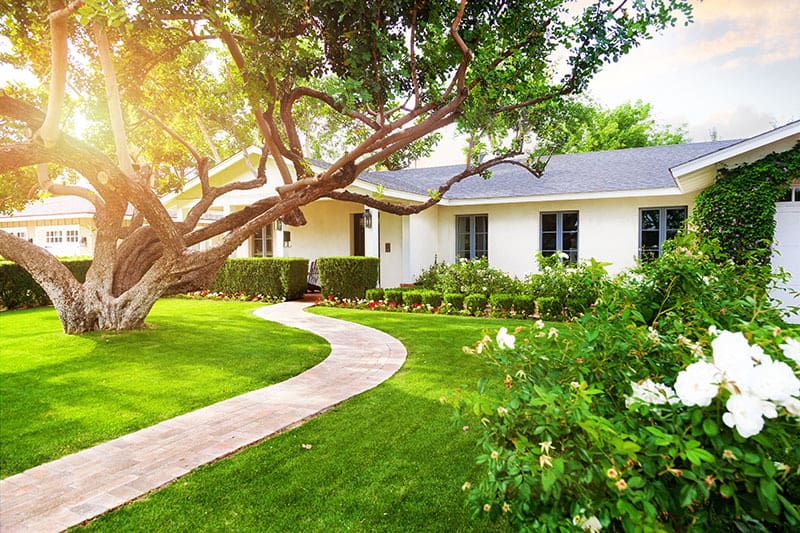What are Warm Season Grasses?
While it’s not necessarily obvious to the untrained eye, grass is different in the southern U.S. than it is in the northern regions. Grasses like ryegrass, Kentucky bluegrass, and tall fescue are all considered cool-season grass and, as a result, they’re commonly seen in the northernmost states. Conversely, grasses like bermuda, centipede, St. Augustine, and zoysia – which are commonly seen in the south – are considered warm-season grasses.
Choosing Warm-Season Grass for Your Lawn
Warm-season grass is usually grown in the southernmost states, including Texas, Louisiana, Georgia, Florida, Arkansas, South Carolina, and parts of California. In these regions, the most common types of warm-season grass include:
- Bermuda grass: Exceptional tolerance for most soil conditions found within warmer climates.
- Carpet grass: Produces oxygen and helps control local pollution.
- St. Augustine grass: Tolerant to shade and able to grow in areas that don’t receive much exposure to the sun.
- Zoysia grass: Ideal for lawns that receive heavy foot traffic on a regular basis.
- Buffalo grass: Excellent drought and cold tolerance.
- Bahia grass: Extremely resistant to insects and disease.
There are even more varieties available, too, especially when you start considering cultivars – or sub-species – of grass. Each of the warm-season grasses listed above has numerous cultivars available that can give your lawn a distinct look. Some of the most popular cultivars for bermuda grass, for example, include:
- Bimini bermuda grass
- Celebration bermuda grass
- Latitude 36 bermuda grass
Likewise, some different sub-species of zoysia grass include:
- Belaire zoysia grass
- Zenith zoysia grass
- El Toro zoysia grass
With so many different types of grass to choose from, the decision can be overwhelming. To complicate the issue even further, some types of warm-season grasses are grown in areas that experience inclement weather and harsh winters. However, the grass will typically become dormant and turn brown or yellow during the winter months.
Overseeding with Cool-Season Grass
Homeowners who want to maintain a lush, green lawn throughout the winter often overseed their lawn with cool-season grass. Both annual and perennial ryegrass are often used, as these are hearty grasses that can easily withstand cooler weather.
Growing Grass in the Transition Zone
Most types of grass can be classified into one of two categories: either warm- or cold-season grass. However, there is another, third classification to consider. The Transition Zone, which extends from Pennsylvania to the northernmost regions of Georgia, is capable of supporting certain types of both warm- and cold-season grass.
Generally speaking, warm-season grasses that thrive in the Transition Zone include:
- Bermuda grass
- Centipede grass
- Zoysia grass
Again, this list doesn’t include the individual cultivars of each grass species, but many of those work well in the Transition Zone, too.
Choosing Ornamental Grass
While they’re often reserved for custom landscaping projects, ornamental grass can be categorized into warm- and cool-season grasses, too. Some of the most popular ornamental grasses for those living in warmer climates include:
- Chasmanthium
- Acorus
- Carex
- Calamagrostis
- Arundo
- Miscanthus
- Hakonechloa
Not only do ornamental grasses give your lawn a unique look in the spring and summer months, but some will thrive during the winter, too – even in some of the colder regions of the country.
Finding the Right Warm-Season Grass for Your Lawn
When it comes to finding the right warm-season grass for your lawn, there is no standard answer. Instead, you’ll need to consider a variety of factors – from the makeup of your soil to your desired aesthetic – in order to make the choice that is right for you and your lawn. So what if you start your gardening journey and you find yourself overwhelmed or needing a hand from the best lawn care professionals? No worries, just reach out to us at lawncare.net, where you’ll find the top Pros in the business – they’ll be sure to have your yard looking like the greenest on the block in no time at all!

